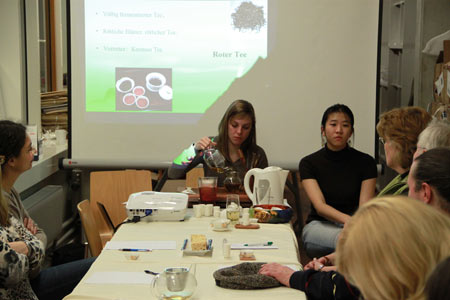| Home > China Feature |
Bamboo carving in China
Bamboo, together with pine and plum, is known as one of the "three good friends in the cold years" and has always been popular among people, including poets, artists and craftsmen. The common bamboo possesses a sense of transcendent beauty, and collecting bamboo carvings has been a hobby for many Chinese people for a long time.
China was one of the first nations to use bamboo. Archeologists once unearthed a painted dragon-pattern bamboo spoon from the Western Han Dynasty (206BC-AD24) at the No. 1 Han tomb of Changsha Mawangdui in Hunan Province.
In the mid-Ming Dynasty(1368-1644) bamboo carvings became a professional industrial art, and more and more artists took it up, shifting its role from practical use into an art form. Jiading in Shanghai and Baoqing in Hunan Province were the two bamboo-carving centers during the Ming and Qing (1644-1911) dynasties.
Jiading Bamboo Carving
Jiading is located in the northwest of Shanghai and is rich in bamboo resources. The school of Jiading bamboo carving was created by Zhu He around between 1506-1566 AD, and was popular throughout the Jiading area.
Zhu He, Zhu Ying and Zhu Zhizheng, three generations of the same family comprised the Jiading School. The initiator, Zhu He, was a man good at poetry, painting and calligraphy. He was brave in innovation and was inferior to no one. His son Zhu Ying and his grandson Zhu Zhizheng inherited his career. They were all good at painting, embossment and round carvings, among which the embossment consisted of bass and high embossments.
With the efforts of the Zhu family, the Jiading School became the biggest branch of bamboo carving at that period. Many outstanding carvers emerged from this school.
Using a knife instead of a brush and carving the bamboo in the same way as calligraphy, was a major feature and traditional skill of Jiading bamboo carving which developed its own school, which employed ten different carving techniques.
Jiading bamboo carving incorporates various art forms such as calligraphy, painting, poetry, literature and seal-cutting, which brings new life to bamboo and made it a favorite among ancient literary types.
Baoqing Bamboo Carving
Baoqing is the ancient name for Shaoyang City in Hunan Province. It boasts abundant bamboo resources and has had a developed bamboo carving industry since ancient times, and is known as one of the cradles of China's bamboo culture.
As recorded in local historical documents, bamboo carving was prosperous as early as the Ming Dynasty (1368-1644). Wang Shangzhi, a famous folk artisan, created Fanhuang bamboo carving during the reign of Emperor Kangxi (1656-1665) of the Qing Dynasty (1644-1911).
Fanhuang bamboo carving is an excellent folk art craft in China. With a history of over 300 years, it is famous for carving bamboo on the basis of its own natural color. There are over 80 processes to be completed before the piece is done. First, quality bamboo must be chosen, and the insides of the stalk gutted. After a special processing regimen that includes steaming, sunning and grinding, the bamboo is then stuck on a wooden or bamboo mold where it is made into different shapes, then is carved with human figures, landscapes, flowers and birds.
Fanhuang bamboo pieces are the color of ivory, and are elegant, fresh and bright, which is harmonious with the nature of bamboo. They bring out the best in each other. The pieces are often used as articles of tribute and diplomatic gifts.
Fanhuang bamboo carving was first introduced to the world in 1915 at the Banama Exhibition, where it won a silver medal.
Bamboo Carving Brush Barrel
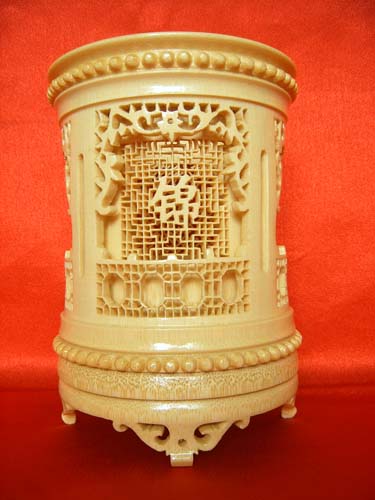
Art
 more
moreSculpture in Qianling Mausoleum
The sculpture of Qianling Mausoleum is the main relic of the ground ...
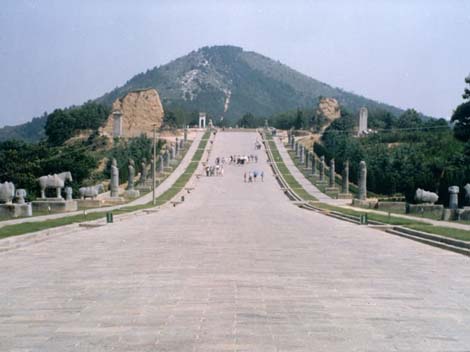
A Sweet Art:Sugar Painting
In and around China’s southwestern Sichuan Province, it is usual to ...
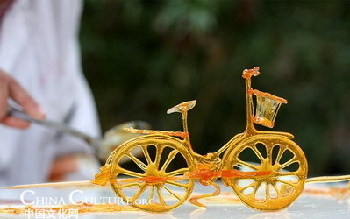
Chinese Treasure Displayed at Sha...
There are four treasures of the Chu Minority Culture displayed at th...
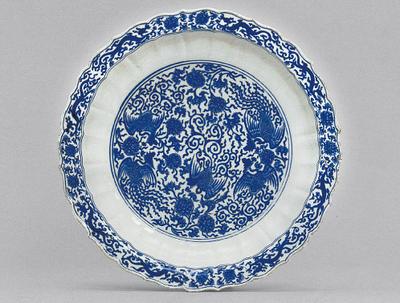
Custom
 more
moreWeb Dictionary
Martial Arts
12 Excellent Kung Fu Movies in 2010 You Shouldn'...
Martial Arts film can be artful and stunningly beautiful, and they...
Shaolin Monks Perform Martial Art in Moscow
A monk from China's Shaolin Temple performs Shaolin mar...
Chinese Kungfu Films Ready for the New Year seas...
The two Chinese blockbusters Let the Bullets Fly and If You Are th...





 print
print  email
email  Favorite
Favorite  Transtlate
Transtlate 